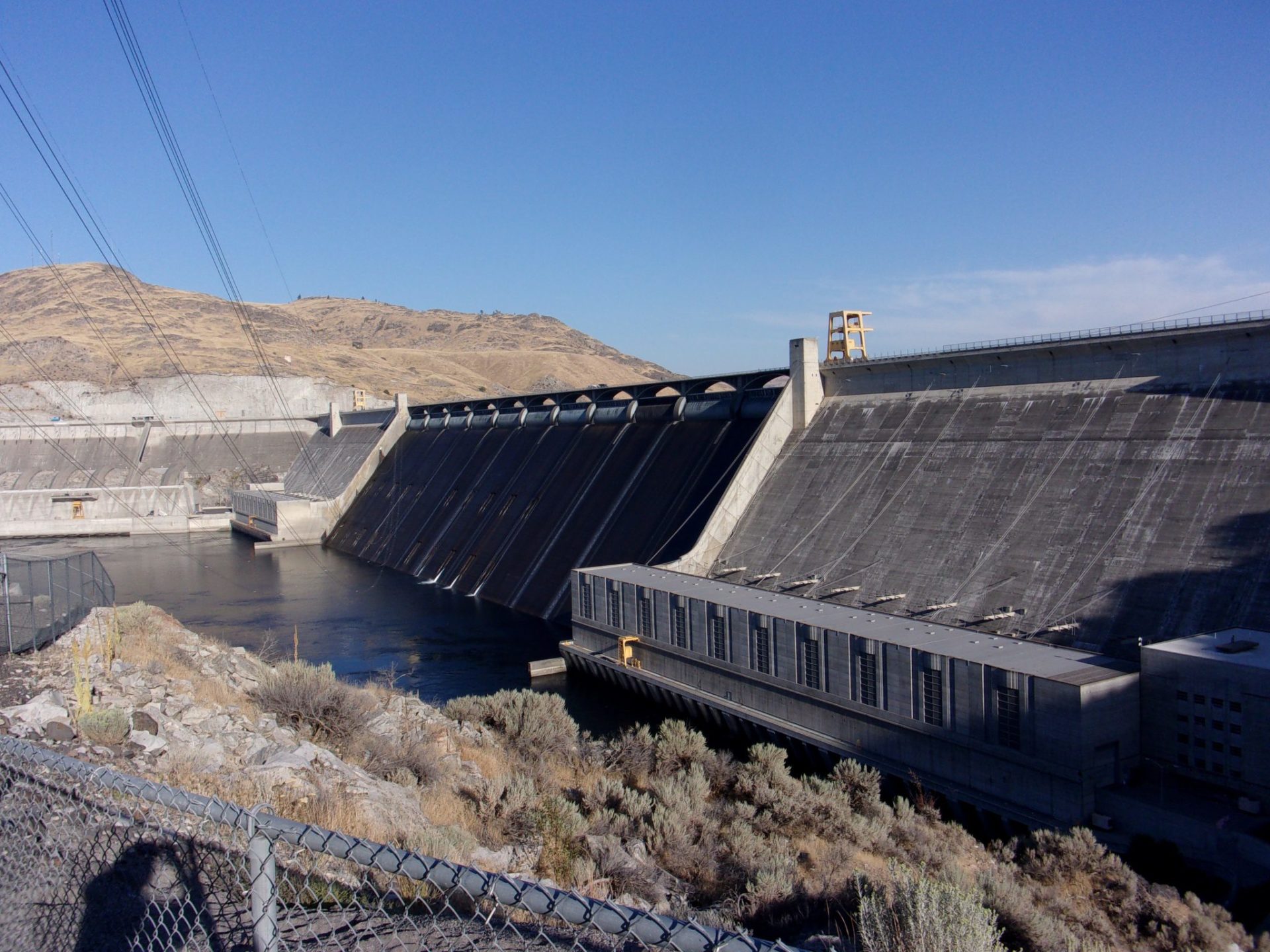Grand Coulee Dam is a concrete gravity dam on the Columbia River in the U.S. state of Washington, built to produce hydroelectric power and provide irrigation water. Constructed between 1933 and 1942, Grand Coulee originally had only two powerhouses.
The proposal to build the dam was the focus of a bitter debate during the 1920s between two groups. One group wanted to irrigate the ancient Grand Coulee with a gravity canal while the other pursued a high dam and pumping scheme. The dam supporters won in 1933, but, although they fully intended otherwise, the initial proposal by the Bureau of Reclamation was for a “low dam” 290 feet (88 m) tall which would generate electricity without supporting irrigation.
After visiting the construction site in August 1934, President Franklin Delano Roosevelt endorsed the “high dam” design which, at 550 ft (168 m) high, would provide enough electricity to pump water into the Columbia basin for irrigation. Congress approved the high dam in 1935 and it was completed in 1942. The first waters overtopped Grand Coulee’s spillway on June 1 of that year.

Power from the dam fueled the growing industries of the Northwest United States during World War II. Between 1967 and 1974, the third powerplant was constructed. The decision to construct the additional facility was influenced by growing energy demand, regulated river flows stipulated in the Columbia River Treaty with Canada, and competition with the Soviet Union.
Through a series of upgrades and the installation of pump-generators, the dam now supplies four power stations with an installed capacity of 6,809 MW. As the centerpiece of the Columbia Basin Project, the dam’s reservoir supplies water for the irrigation of 671,000 acres (2,700 km2).The reservoir is called Franklin Delano Roosevelt Lake, named after the United States President who presided over the dam’s authorization and completion.
Grand Coulee Dam includes three major hydroelectric power generating plants and a pump generating plant. The facilities provide power generation, irrigation, flood control, streamflow regulation for fish migration, navigation, and recreation.
When the Nathaniel Washington Power Plant was completed in 1980, Grand Coulee Dam became the largest hydropower generating complex in the United States with a generating capacity of 6,809-megawatts supplying up to 21 billion kilowatt-hours of electricity. In addition, Canada receives power under the Columbia River Treaty. Grand Coulee Dam is operated as part of a coordinated federal system of hydroelectric facilities, which provides 75% of the entire power supply of the Pacific Northwest.
In addition, Grand Coulee Dam funds a complex of three hatcheries (Leavenworth, Winthrop and Entiat), collectively known as the Leavenworth Complex, to mitigate the loss of anadromous fish above the dam.
According to en.wikipedia; usbr.gov. Source of photos: internet








